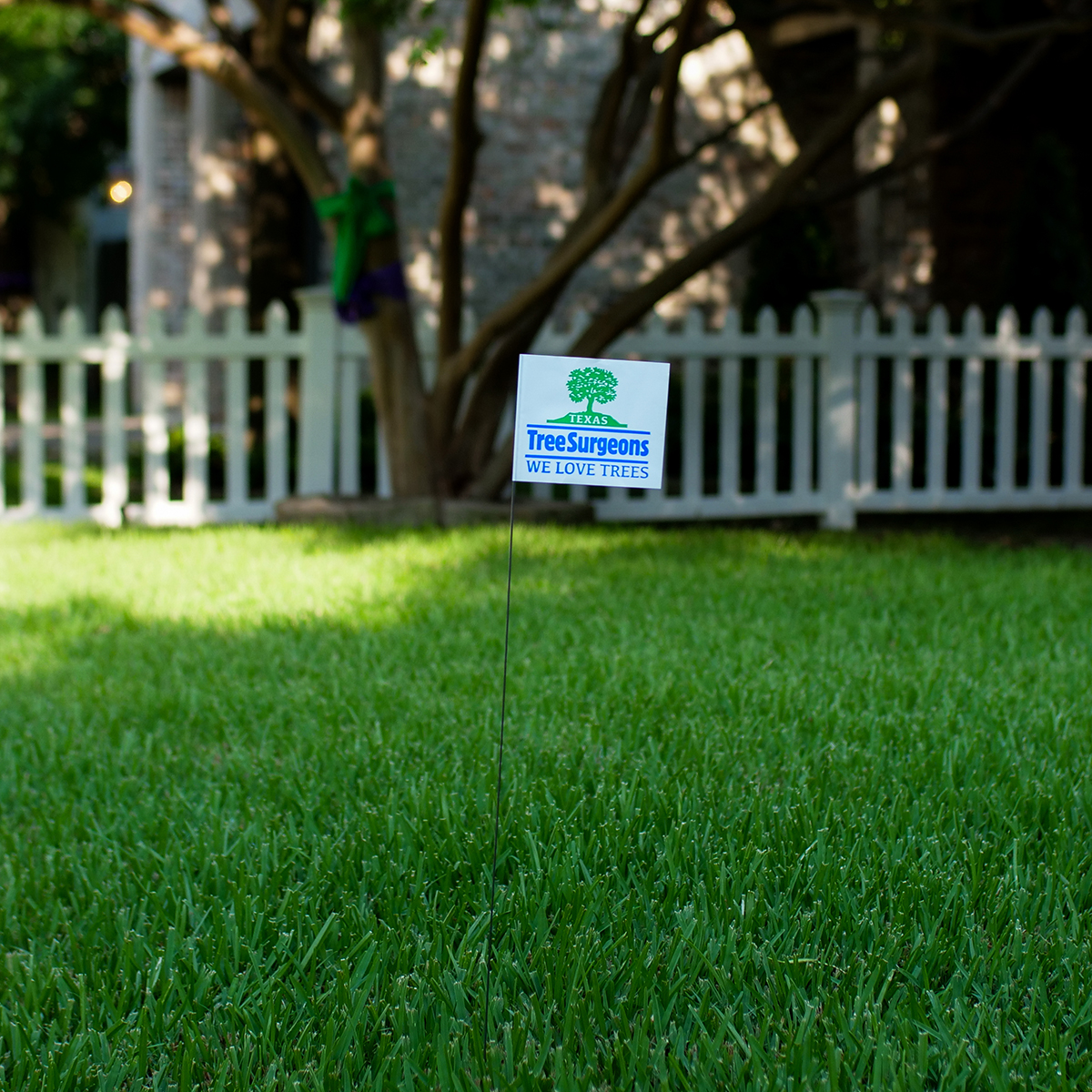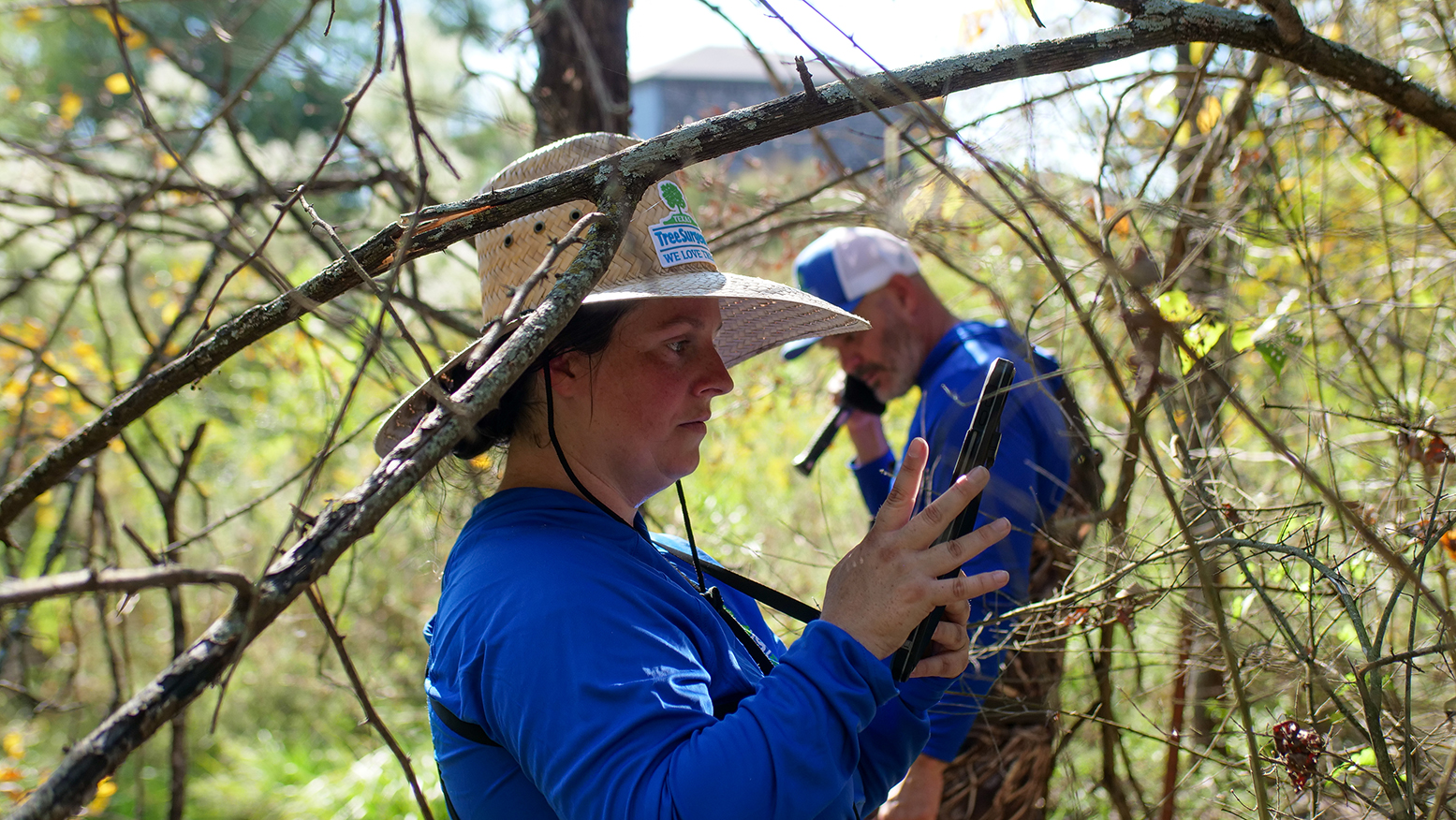Why Shouldn’t We Treat for Aphids?

The recent explosion of aphid activity in North Texas caused frustration and concern among tree owners and anyone who has encountered the sticky mess that aphids cause. When aphids have matured and are feeding (and producing honeydew), best practice guidelines do not recommend using chemical controls. Introducing natural aphid predators can help reduce the population, but the best course of action, especially with a fall aphid infestation, is simply to wait about a month for the aphids to die off and cooler weather to prevent another generation from maturing.
Are There Any Natural Ways to Get Rid of Aphids?
Chemical pesticides are not the only way to control aphids. One of the most effective and long-lasting ways of reducing aphid activity is to introduce natural predators of the aphid into the environment. With an autumn infestation, however, there is limited time to act and leaves may drop and temperatures fall before any aphid control has a chance to make a difference.
Lady Beetle (“Ladybug”)
- “Lady beetle” refers to several species of insect in the family Coccinellidae of the order Coleoptera
- There are over 450 species in the United States, some native, some introduced
- Drawn to areas with large concentrations of aphids or other food source
- Prey on aphids throughout life cycle
- Lady beetle larvae often resemble tiny alligators
- Take about two to three weeks to hatch and mature from eggs
While lady beetles are a welcome addition to the garden, some non-native species can invade our homes during winter. These lady beetles often have an “M” or “W” mark on their shells, just behind the head. To keep your home lady beetle-free:
- Keep trees and bushes trimmed back from structures
- Avoid stacking firewood next to the house
- Seal up cracks around windows
- Use wire mesh to screen large vents
Taking a few precautions will not only keep lady beetles out of your house, but block larger and harmful pests as well!
Lacewings
- Two major varieties: green lacewings and brown lacewings, in order Neuroptera
- Lay distinctive single eggs on stalks
- Larvae often called “aphid lions”
- Can consume up to 200 aphids a week
- Adults can feed on aphids as well
- Take about two to three weeks to hatch and mature from eggs
There are species of lady beetle and lacewing that are active in the spring and in the fall, so there is a potential for year-round aphid control. Introducing lady beetle larvae can have a serious effect on aphid activity, but keep in mind that, depending on the species, the predators may not survive winter and may need to be re-introduced in the spring.
In addition to predators, simple physical controls, such as using water to remove aphids from plants, can also help in the short term. Avoid using high-nitrogen fertilizers as these can stimulate rapid growth and attract more aphids. Luckily, with fall aphids, once the leaves drop and their food source is removed, the pests will die off quickly.
Why aren’t Chemical Controls Effective for Fall Aphids?
There are several chemical insecticides that target aphids. These products generally break down into two categories: systemic and non-systemic.
- Systemic Pesticides
- Absorbed into the the plant they are applied to and transported throughout the plant’s structure
- Can take up to a month for chemical to become present throughout mature trees and reach full effectiveness
- Generally effective for longer than non-systemic
- Resistant to being diluted or washed away by rain
- While present in plant, can protect both new and old growth
- Can be applied before growing season or anticipated increase in pest activity
- Absorbed into the the plant they are applied to and transported throughout the plant’s structure
- Non-Systemic Pesticides
- Cling to the surface of treated plants
- Effective immediately
- At risk of dilution or removal by rain, sprinklers, etc.
- May not protect growth after application
- Can be applied preventatively, but timing more important due to risk of dilution/loss
- Difficult or impossible to apply to large trees/plants
- Large-scale spraying may lead to environmental contamination
- Cling to the surface of treated plants
Comprehensive pest management often uses both systemic and non-systemic chemicals to provide maximum protection. Before a growing season, in late winter for example, it is common to apply a surface spray and a systemic insecticide to crape myrtles and other trees that are susceptible to insect infestations in the spring. The surface spray provides protection while the systemic product has time to come to full effectiveness.
In the case of insect activity in fall, chemical controls should not be applied as they would be before a growing season. Non-systemic pesticide sprays can be effective against current pest activity, but in the case of large, mature trees, such as the pecans and oaks infested with aphids in the fall of 2022, applying sufficient quantities of external pest control is not only expensive, but is potentially hazardous to the surrounding environment with the high potential for overspray and excess application. Furthermore, as fall in North Texas often brings rain, any product applied may be washed away quickly, and possibly end up in the groundwater.
Systemic insecticides carry a much lower risk of environmental contamination, but take about a month to become effective. In the case of a fall application, systemic controls may take even longer, as trees begin going dormant and dropping leaves, slowing the uptake of both nutrients and chemicals. In general, it is not recommended to use any systemic insecticides in the fall, as the likelihood of their becoming effective before the pests naturally die off is low.
In summary, be wary of service providers who claim that they can control fall aphids chemically; they may be able to reduce activity, but full eradication is nearly impossible and runs a high risk of contamination and waste of chemicals, time, and money.
At Texas Tree Surgeons, we love trees and we love our community! These fall aphids have been a real nuisance, and we want to give our customers the best advice so that money and time is not wasted on ineffective treatments. While we don’t recommend chemical application for fall aphids, we are big fans of introducing some aphid predators while you still have time! As a woman-owned and women-led company, we are partial to lady beetles :-), but lacewings are great, too! Share this article and spread the word about aphids, and let us know if you have any other tree questions!
Related Blogs
Similar blogs related to this topic


Top 10 Things We'd Tell You as an Arborist if We Weren't Afraid of Hurting Your Feelings
This is a list of tree care worst practices that you, or someone you know may be guilty of. Read the following list at your own risk. You’ve been warned, feelings may get hurt. 1.…
Read more

Avoid These Tree Care Mistakes for a Healthy Landscape
Below is a list of overlooked mistakes that could jeopardize the health of your trees. From missteps in pruning to incorrect watering practices, discover how to give your trees the care they deserve. Red oak…
Read more

Why do Arborists Recommend Soil Sampling in Urban Areas like Dallas?
Soil sampling is a crucial practice in urban areas like Dallas. It helps arborists make informed decisions about your landscape to ensure a healthy urban ecosystem. Our native soils vary widely—from the dense clays of…
Read more
